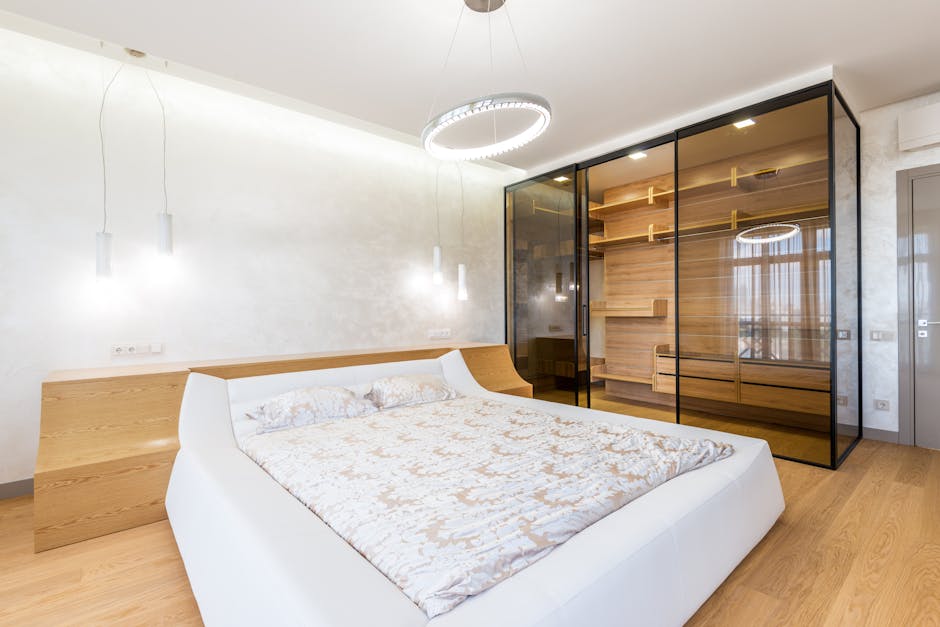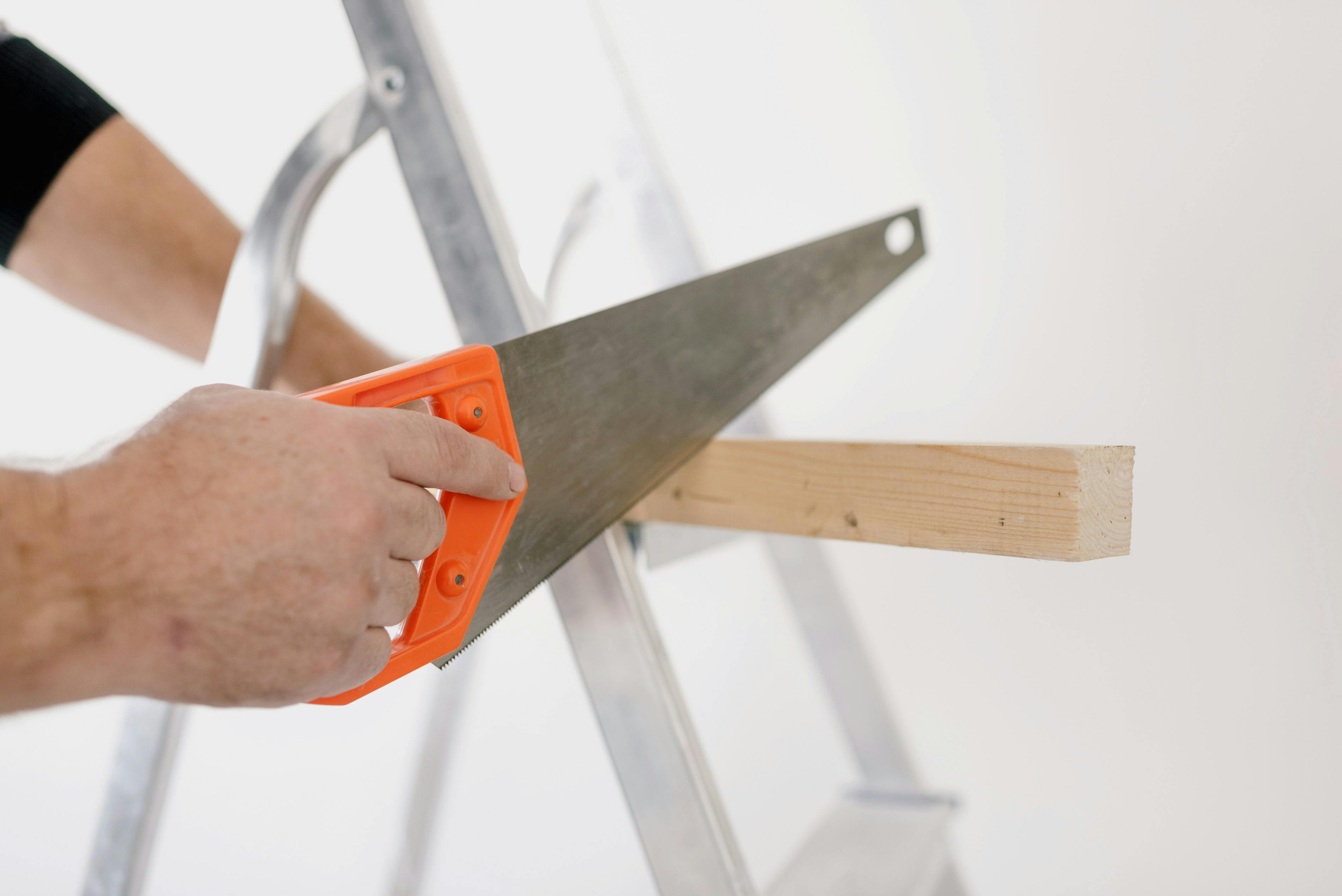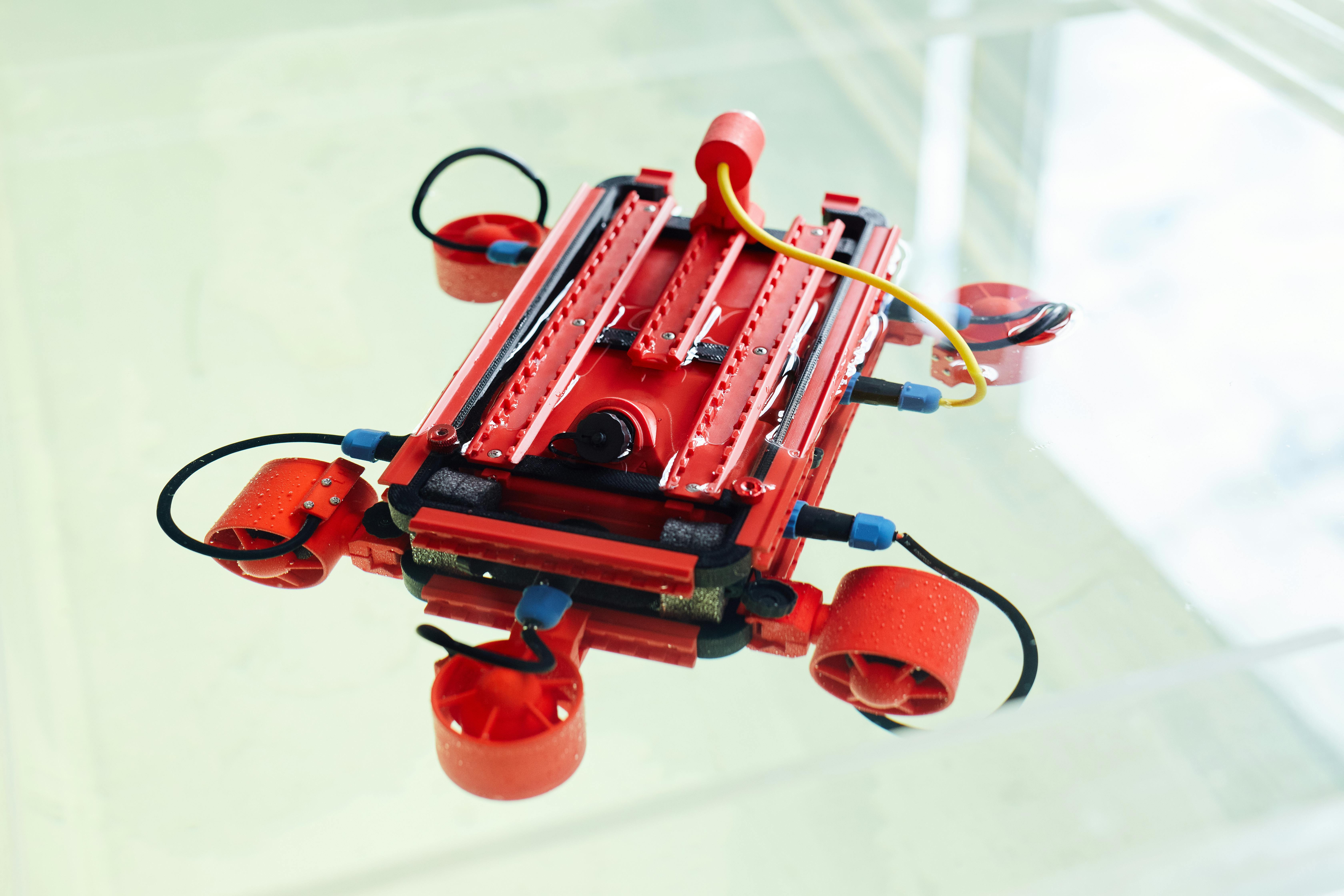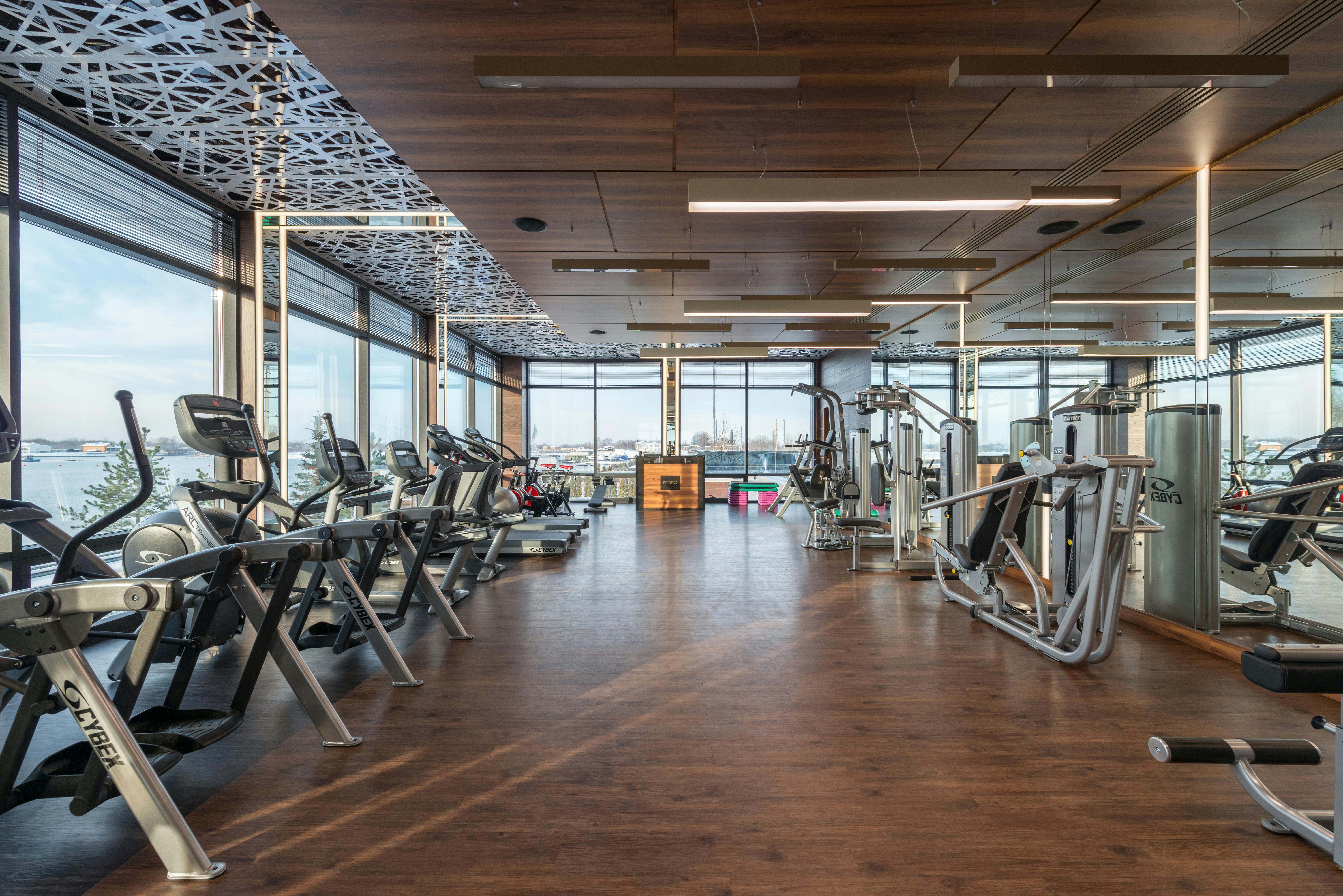
The Versatile Laminate Sheet: A Perfect Blend of Style and Durability
Exploring the world of laminate sheets: Introduction to versatility and durability
Laminate Sheets - you've probably heard of them, but do you really know what they are? Prepare to dive into the world of these versatile and durable materials. Whether you're a renovation enthusiast, interior designer, or simply curious about the wonders of laminate, this blog post is for you.Laminate sheets are made up of multiple layers that are bonded together using special adhesives under high pressure. The core layer is usually composed of wood fibers or particleboard, providing stability and strength. A decorative layer with various patterns and colors is placed on top, showcasing the desired aesthetic effect. Finally, a protective layer is added to ensure durability and enhance resistance against scratches, stains, and moisture.
What makes laminates such a popular choice for surfaces in commercial and residential spaces alike? Versatility is undoubtedly one of their key strengths. With an extensive array of design options available, laminate sheets can mimic the look of natural materials such as wood, stone, or even metal. This allows for greater design freedom and flexibility; you can achieve the desired aesthetic without breaking the bank.
Durability is another hallmark trait of laminate sheets. While they may look like the materials they imitate, they have extra advantages on their side. Laminate surfaces are typically more resistant to wear than natural materials, making them a practical choice for high-traffic areas in your home or office. Additionally, their protective layer effectively shields against damage from ultraviolet rays which would otherwise cause fading over time.
Maintenance is a breeze with laminate sheets. Unlike genuine wood or stone surfaces that require regular upkeep such as polishing or sealing, laminates only need a basic cleaning routine involving mild soap and water. Stains from spills can be easily wiped away without leaving any stubborn marks. This hassle-free maintenance characteristic adds to their appeal in today's fast-paced world.
Laminate sheets are not limited to countertops alone. They can be used on various surfaces in your living space. Think kitchen cabinets, pantry shelves, bathroom vanities, and even flooring options. The possibilities are virtually endless, limited only by your imagination.
With their countless benefits and cost-effective nature, it's no surprise that laminate sheets have gained immense popularity over the years. Homeowners and professionals alike appreciate their versatility, durability, and ease of use. So, whether you're seeking to renovate a space or simply hoping to freshen up your surroundings within a budget, laminate sheets might just be the answer you've been searching for.
Explore this world of laminate sheets; let your creative ideas flow while also enjoying the peace of mind provided by their long-lasting quality. Remember, the road to stunning and practical surfaces begins here.

The science behind laminate sheets: Understanding what makes them tough
Laminate Sheets have gained immense popularity as a versatile material suitable for various applications, from furniture to flooring. It's fascinating to delve into the science behind these sheets to understand what makes them remarkably tough and resilient.At the core of their durability is their layered composition. Laminate sheets typically consist of multiple layers that synergize to create a robust structure. These layers are bonded together using high pressure and heat, resulting in a strong and cohesive product.
The bottom layer is commonly a treated kraft paper saturated with resin. This layer serves as a stabilizing foundation, providing resistance against moisture, impacts, and warping. An important feature of this layer is its ability to ensure dimensional stability in laminate sheets, preventing them from bending or deforming under external stress.
Above the base layer lies the decorative layer, which gives laminate sheets their appealing aesthetic appeal, imitating various materials such as wood, stone, or patterns. High-definition printing techniques are employed here to produce realistic visuals. This layer is crucial in enhancing the overall appearance of laminate sheets while ensuring long-lasting visual appeal.
The next layer is what confers remarkable strength to laminate sheets: the core layer. Made of densely compressed fine-quality fibers or particleboard, this layer acts as the backbone, contributing greatly to their toughness and resistance against wear and tear. The core layer plays a significant role in distributing applied force evenly across the surface, making laminate sheets more durable in comparison to other materials.
Lastly, we have the top wear layer – a transparent melamine or aluminum oxide resin coating. This layer provides robust protection against scratches, stains, fading, and even water damage. It acts as a shield against daily wear and tear, allowing laminate sheets to maintain their original appearance over time. The wear layer significantly contributes to the longevity of laminate sheets by safeguarding them from outdoor elements and regular use.
What makes laminate sheets most intriguing isn't just their composition but also the advanced technologies employed during their production. Although the recipe might vary among manufacturers, the meticulous bonding process unites all these layers, ensuring a strong adhesion and cohesive structure. Moreover, some manufacturers incorporate antibacterial properties into their laminate sheets, making them ideal for healthcare facilities and hygienic environments.
By grasping the science behind laminate sheets, one can appreciate how each layer intertwines to create a durable and resilient material. Whether you're outfitting your kitchen countertop or rejuvenating your office flooring, the toughness of laminate sheets make them a reliable choice capable of withstanding daily wear while maintaining their flawless appearance for an extended period.

A spectrum of styles: Navigating through the vast selection of laminate designs
When it comes to Laminate Sheet designs, the options available are truly remarkable. With a vast selection of styles to choose from, navigating through them can be both exciting and overwhelming at the same time.There is a wide spectrum of laminate designs, ranging from captivating wood grains that replicate the look of natural hardwood floors to sleek and glossy finishes that mimic the appearance of stone or metal. No matter what aesthetic you're aiming for with your project, there's bound to be a laminate design that perfectly suits your taste.
Traditional laminate designs often feature classic wood patterns, such as oak, cherry, or walnut. These designs effortlessly lend a warm and inviting look to any space. They come in various shades, allowing you to select a lighter tone for a more airy feel or go with darker woods for a touch of richness and depth.
If you prefer contemporary or modern styles, you'll find plenty of laminate designs that cater to your preferences. Minimalistic designs in neutral tones, like gray or white, create a clean and sophisticated ambiance. The smooth finish of these laminates adds a sense of elegance without being overpowering.
For those who love the timeless look of stone or concrete but want a more budget-friendly alternative, there are numerous laminate choices available that mimic their appearance flawlessly. From granite and marble imitations to trendy concrete-style laminates, achieving an industrial or luxurious vibe is easier than ever without breaking the bank.
Laminate is not limited to imitating natural materials; it can also replicate patterns you won't typically find in nature. From bold geometric patterns to funky abstract designs, laminate offers eclectic options that work exceptionally well in a creative and playful environment. These unique patterns serve as an eye-catching focal point in any space.
With advancements in technology, laminate manufacturers increasingly experiment with surface textures and finishes too. You can find laminates that reproduce the feel of textured fabrics, salvaged wood, or weathered metals. These tactile laminates add an extra layer of depth, realism, and sensory experience to your surfaces.
Whether you're designing a residential space, an office, or a commercial establishment, laminate sheet designs cater to almost any purpose and taste. Matching the overall theme or simply making a statement is incredibly achievable with the extensive spectrum of styles available.
When selecting a laminate design for your project, always consider the existing elements in the space. The right design can either blend seamlessly with your decor or become the defining feature that elevates the overall look. With numerous options available, take your time to explore various styles and let your creativity be your guide. Ensure that the laminate design you choose aligns with your vision for your space and perfectly reflects your personal style.

Laminate sheet application wonders: From kitchens to offices
Laminate Sheets are versatile materials, serving as a multipurpose solution with wide-ranging applications. Their incredible versatility makes them suitable for a variety of settings, ranging from kitchens to offices and everything in between.When it comes to kitchen applications, laminate sheets truly work wonders. Their durable and resilient nature allows them to withstand the demands of a bustling kitchen environment. With high resistance against scratches, stains, and heat, laminate sheets offer a practical solution for countertops and cabinetry. The robust protection provided by laminate sheets ensures they can endure daily wear and tear, maintaining their attractive appearance for years to come.
In addition to their functionality in kitchens, laminate sheets also find their place in office settings. Whether it be in home offices or corporate spaces, laminate sheets offer an affordable and visually appealing option. Office desks laminated with these sheets not only evoke a professional ambiance but also provide a smooth work surface that is resistant to spills and blemishes. With an extensive range of colors and patterns available, laminate sheets enable the creation of a personalized workspace that reflects individual style and enhances productivity.
Moreover, the application wonders of laminate sheets extend beyond just kitchens and offices. They are also ideal for use in commercial establishments such as restaurants, cafes, and retail stores. Laminate sheet flooring not only replicates the look of authentic materials like hardwood or stone but also offers increased durability and longevity. The easy maintenance requirements and resistance to heavy foot traffic make laminate sheet flooring an excellent choice for businesses seeking cost-effective yet striking flooring options.
Beyond the practical aspects, laminate sheets allow for creative expression within interior design projects. From wall paneling to decorative shelving, these sheets act as a blank canvas waiting to be transformed into imaginative designs that reflect personal style or enhance brand image.
In conclusion, laminate sheet applications abound, showcasing its adaptability in various settings. Whether being used in kitchens as resilient countertops or reliable office desks or even as flooring options for businesses or decorative features in interior design projects, laminate sheets offer a diverse array of functional and aesthetic benefits. Embracing the wonders of laminate sheet applications truly opens up a world of possibilities for both residential and commercial spaces.

DIY Projects: Innovating with laminate sheets in your home decor
DIY Projects: Innovating with Laminate Sheets in Your Home Decor
Considering laminate sheets for your home decor projects can be a game-changer when it comes to creating a unique and trendsetting space. The versatility and affordability of laminate sheets make them an ideal solution for DIY enthusiasts looking to revamp their interiors on a budget. Here are some exciting ways you can incorporate laminate sheets into your home decor projects:
Furniture facelifts: Breathe new life into old or plain furniture pieces using laminate sheets. Whether it's a worn-out table, boring dresser, or scruffy kitchen cabinets, laminates can help transform them into stylish focal points within your space.
Kitchen upgrades: Tired of your lackluster kitchen? Use laminate sheets to upgrade your countertops, backsplashes, and even cabinet doors for a fresh and modern look. Laminate sheets offer an extensive array of patterns and colors that can easily mimic more expensive materials like granite or marble.
Wall wonders: Add a touch of personality to your walls by utilizing laminate sheets creatively. From accent walls to wainscoting, laminates can be an excellent alternative to traditional paint or wallpaper. Explore unique textures and patterns to give your walls a distinct character that stands out.
Storage solutions: Looking for clever storage ideas? Incorporating laminates in shelving units or built-in storage systems can instantly transform a dismal space into an organized and visually appealing one. Customize the sizes and shapes as per your requirements and experiment with different color combinations to create a cohesive look.
Floor fashion: Laminate flooring is a go-to option for many DIYers due to its durability, versatility, and cost-effectiveness. Install the laminate floorboards yourself for an easy-to-maintain surface that mimics the appearance of hardwood, stone, or tile, without the substantial expense.
Doors with flair: Give your plain doors personality by applying laminate sheets on their surfaces. Revamp closet doors, room dividers, or even exterior doors with this cost-effective solution. Create a consistent theme throughout your home by choosing laminates that complement your overall color scheme.
Personalized accents: Express your creativity by incorporating laminate sheets into small accent pieces like picture frames, trays, or serving platters. With various laminate patterns available, you can match these accessories to the overall design and atmosphere of the room.
It's worth mentioning that when working with laminate sheets in your projects, ensure proper precision while cutting and adhere to manufacturer guidelines for the best results. Additionally, take proper precautions to protect yourself and your surrounding areas from any potential hazards while carrying out DIY projects.
By leveraging the numerous advantages of laminate sheets, you can create stunning home decor projects while staying within your budget. The only limit is your imagination!

The environmental impact of laminate sheets: A sustainability overview
Laminate Sheets, commonly used in construction and interior design, have become increasingly popular due to their versatility and aesthetic appeal. While they offer many benefits, it is important to consider their environmental impact. This article provides an overview of the sustainability aspects related to laminate sheets.The production process of laminate sheets involves several components that can have adverse effects on the environment. One of the primary concerns is the extraction and use of natural resources. Laminate sheets typically consist of layers made from paper or wood fibers, which are often derived from trees. Deforestation and habitat destruction can occur as a result, leading to increased carbon emissions and loss of biodiversity.
Additionally, the process of manufacturing and treating these materials commonly uses various chemicals, such as adhesives, resins, and laminators. Harmful substances like formaldehyde may be present in these chemicals and can emit volatile organic compounds (VOCs). VOCs contribute to air pollution and can have negative health effects on both humans and ecosystems.
Energy consumption also plays a significant role in the environmental impact of laminate sheet production. The energy required for manufacturing processes, including extracting raw materials, drying fibers, applying adhesives, and pressing layers together, contributes to greenhouse gas emissions. This contributes to environmental degradation and climate change.
On the contrary, some improvements have been made within the industry towards sustainability. High-pressure laminate (HPL) sheets that incorporate recycled content are now available. These products reduce the need for new materials extraction and help manage waste effectively. Moreover, some manufacturers are adopting energy-efficient practices in their facilities to minimize the carbon footprint associated with production processes.
It is worth noting that laminate sheets offer durability and low maintenance properties, reducing the need for frequent replacement or repair. By choosing longer-lasting materials like laminates over less-durable options, individuals can decrease the overall environmental impact related to resource consumption and waste generation.
The disposal phase of laminate sheets poses further environmental challenges. While they are not biodegradable, many laminate products can be recycled. However, separating various layers and components of laminates can be difficult and requires advanced recycling techniques. If not recycled properly, laminate sheets may end up in landfills, contributing to the accumulation of non-biodegradable waste.
To mitigate the environmental impact of laminate sheets, it is essential to prioritize sustainable alternatives. Consider choosing products from manufacturers that follow eco-friendly practices and offer certifications such as Forest Stewardship Council (FSC) certification to ensure responsible sourcing of materials. It is also important to properly dispose of laminate waste by exploring recycling options or contacting relevant authorities for guidance on eco-friendly disposal methods.
In conclusion, while laminate sheets offer numerous benefits in terms of versatility and aesthetics, their production, use, and disposal can have significant environmental implications. Prioritizing sustainable practices and opting for eco-friendly alternatives can help minimize the adverse impacts associated with these materials.

Comparing countertops: Laminate vs. granite vs. quartz
When it comes to comparing countertops, three popular options stand out: Laminate Sheet, granite, and quartz. Each material has its own unique qualities and benefits, making them suitable for different preferences and budgets.Laminate countertops are an affordable choice that offers a wide range of colors, patterns, and finishes. Made from layers of resin-saturated paper bonded to a wood-based core, laminate is durable and easy to clean. It is also resistant to most stains, impacts, and heat up to certain temperatures. However, it is less heat-resistant than both granite and quartz.
Granite countertops, known for their natural beauty, are made from solid slabs of stone extracted from the earth. With a variety of colors and intricate patterns formed by the minerals in the stone, each piece of granite is unique. Granite provides an elegant appearance and is highly durable, scratch-resistant, and heat-resistant. However, it requires regular sealing to prevent staining and can be more expensive than other materials.
Quartz countertops offer the benefits of both laminate and granite with some added advantages of their own. Also known as engineered stone or composite stone, quartz countertops are created by combining crushed quartz mineral with resin binders. This process produces an extremely durable surface that is resistant to stains, scratches, and heat. Unlike natural stone surfaces, quartz does not require sealing or special maintenance. Additionally, quartz offers consistent patterns across slabs, making it an attractive option for those seeking a more uniform appearance. However, it tends to be more expensive than laminate yet less expensive than some premium granite options.
That said, personal taste plays a significant role in choosing the right countertop material. Some homeowners appreciate the affordability and versatility of laminate countertops, while others desire the natural charm of granite or the sleek look of quartz. Budget considerations are also important as prices can vary greatly between these three materials.
Overall, when comparing countertops - laminate versus granite versus quartz - there are several factors to consider. These include cost, design preferences, longevity, required maintenance, and ease of cleaning. Understanding the unique characteristics of each material empowers homeowners to make an informed decision that best suits their needs and aesthetics.

Transforming spaces: Before and after stories of laminate makeovers
One of the most exciting aspects of home improvement is witnessing the incredible transformations that can occur within a space. With the right materials and design choices, a room can be completely revamped into something truly remarkable. Laminate Sheet is an excellent option for those seeking to achieve stunning makeovers without breaking the bank.Whether you're refurbishing a bedroom, kitchen, or office space, laminate has become an increasingly popular choice due to its versatility, durability, and affordability. This robust material is manufactured by fusing multiple layers together, using high heat and pressure techniques. As a result, laminate possesses remarkable strength and resists scratches, abrasions, stains, and fading. With an extensive range of colors, patterns, and textures available today, laminate can effectively mimic the look of natural materials such as wood or stone.
One of the main reasons people choose laminate over other flooring or surfacing options is its incredible ability to transform a room's aesthetic appeal. The before-and-after stories of laminate makeovers are nothing short of astonishing. For example, homeowners with outdated, worn-out hardwood floors may choose to replace them with laminate floors that resemble expensive walnut or oak finishes at a fraction of the cost. The result? A brand new surface that breathes life into the entire room.
Likewise, kitchens can undergo dramatic changes through laminate sheet installations. An old, drab space can be revived into a vibrant culinary paradise by simply updating countertops with glossy or matte laminate options that resemble quartz or granite. This makeover not only invigorates the cooking space but also helps improve functionality with surface properties resistant to moisture and staining.
Bathrooms are another area where laminate makeovers shine. Imagine a small bathroom with outdated tiles transformed into an eye-catching haven through the installation of tile-style laminate sheets. Not only does this revolutionize the space aesthetically but it also eliminates concerns about water damage thanks to laminate's water-resistant properties.
Another effective use for laminate sheet is in creating stunningly beautiful accent walls. A plain, dull living room or bedroom can instantly become a feast for the eyes with the introduction of laminate sheets in vibrant and exciting patterns. A worn-out fireplace or plain-textured wall can now become a statement piece that takes center stage.
In conclusion, laminate's affordability, durability, versatility, and ability to mimic natural materials make it an ideal choice for transforming spaces. Seeing the before-and-after stories of laminate-covered rooms highlights the incredible impact this material can have on any given space. From enhancing functionality and aesthetics in kitchens and bathrooms to revamping flooring and accent walls, laminate makeovers are truly remarkable and worth exploring for anyone looking to breathe new life into their living environment.

Care and maintenance tips for your laminate surfaces
Care and maintenance tips for laminate surfaces are essential to ensure their longevity and keep them looking clean and intact. Here are some suggestions for taking care of your Laminate Sheets:- General Cleaning: Regularly dust or vacuum the surface to remove loose dirt and debris. Use a soft mop or cloth dampened with warm water and mild detergent to wipe the laminate gently. Avoid using harsh chemicals or abrasive cleaners as they can scratch or damage the surface.
- Stain Removal: For minor stains like coffee, tea, or juice, immediately wipe them with a damp cloth or sponge to prevent absorption. For tougher stains such as ink or marker residue, try using isopropyl alcohol or a non-acetone-based nail polish remover on a soft cloth. Remember to always test any cleaning product on a small, hidden area before applying it to the stained spot.
- Avoid Excessive Moisture: While laminate surfaces are moisture-resistant, they are not completely waterproof. Clean up spills promptly to prevent moisture from seeping into the laminate layers. Wipe spills with a dry or slightly damp cloth rather than letting them air dry.
- Heat Protection: Laminate sheets may be heat resistant but can still be damaged by excessive heat. Always use trivets or coasters under hot utensils, pots, or pans to avoid scorching or warping the laminate surface. Do not place hot appliances directly on top of laminates.
- Knife Safety: To prevent scratches and cuts on your laminate surfaces, avoid cutting directly on them with sharp knives or other utensils. Instead, use a cutting board as a protective layer between the laminate sheet and the knife's edge.
- Furniture Care: When moving furniture over laminate floors or countertops, lift the objects instead of dragging them to avoid scratching or scraping the surface. Add pads or felt protectors under the legs of your furniture to prevent any direct contact between the laminate and hard materials.
- Avoid Excessive Weight: Laminate sheets are durable, but they can be susceptible to damage if excessive weight is applied continuously. Avoid placing heavy objects or applying pressure on small areas of the laminate surface for an extended period.
- Sunlight Exposure: Prolonged exposure to direct sunlight may cause discoloration and fading of the laminate due to UV rays. Consider using window treatments like blinds, curtains, or UV protective films to minimize the impact of sunlight on your laminate surfaces.
- Sealing and Repairs: Laminate sheets do not require sealing, as they are pre-finished; however, if you notice any chips, scratches, or loose edges, it's essential to address them promptly. Utilize laminate repair kits available in hardware stores or use color-matching adhesive to fix any damages carefully.
Remember, care and maintenance practices may differ based on the specific product and manufacturer guidelines. Always refer to the manufacturer's recommendations for your laminate sheet to ensure you're following the appropriate instructions.

Innovation in the industry: Latest trends in laminate sheet design and technology
Innovation in the Laminate Sheet industry has seen remarkable advancements in design and technology. Manufacturers are continuously striving to bring new and exciting options to the market, catering to ever-changing customer demands. Here are some of the latest trends observed in laminate sheet design and technology.- Realistic Visual Reproduction: Laminate sheet manufacturers have made significant strides in replicating natural materials using high-definition printing techniques. Designs that mimic the appearance of wood, stone, marble, concrete, and even metal have become increasingly popular. The level of detail achieved in these patterns blurs the line between laminates and their natural counterparts.
- Textured Surfaces: Texture is key in creating an authentic feel and adding depth to laminate sheets. Innovations in embossing technology have enabled manufacturers to develop various surface textures that mimic the touch and feel well beyond a simple visual reproduction. Textured finishes now range from smooth to rustic, enabling endless design possibilities.
- Sustainability and Environmental Consciousness: The laminate industry has become more mindful of sustainability concerns in recent years. Many manufacturers are embracing eco-friendly practices by incorporating sustainable materials into their products. They utilize recycled content, adhere to stricter emissions standards, and promote responsible forest management.
- Anti-bacterial Properties: With hygiene being a high priority in today's world, a growing trend is the integration of anti-bacterial technologies into laminate surfaces. These special coatings hinder the growth of microbes on the sheet's surface, ensuring enhanced cleanliness and lower transmission risks.
- Enhanced Scratch and Wear Resistance: Advances in manufacturing processes have resulted in laminates with improved resistance against scratches, wear, fading, and impact. Protective layers such as melamine make laminate sheets more durable and increase their lifespan, making them suitable for high-traffic areas.
- Thicker Laminate Sheets: Although standard thicknesses have prevailed for a long time, thicker laminate sheets are gaining popularity lately due to their enhanced durability and high-quality feel. Thicker options deliver improved rigidity, reduce the visibility of imperfections, and offer better moisture resistance.
- Customization: Customization options have expanded beyond traditional colors and designs. Many laminate sheet manufacturers now offer customization in terms of size, pattern, and texture. This trend caters to individuality and allows customers to express their unique style better.
- Sustainable Packaging: Apart from sustainable manufacturing practices, companies also focus on sustainable packaging for their laminate sheets. Opting for eco-friendly packaging solutions such as using recycled materials or reducing waste has become a recent trend.
- Digital Integration: With technology becoming increasingly intertwined with our daily lives, laminate sheet manufacturers are embracing digital integration. This includes utilizing augmented reality (AR) or virtual reality (VR) applications to allow customers to visualize laminate designs in real-time, enhancing the overall shopping experience.
- Enhanced Installation Techniques: Many manufacturers are constantly working on improving installation techniques by introducing click systems or adhesive-free options. These innovations simplify the installation process, making it easier for consumers to handle DIY projects or hire professional installers.
As innovation drives the industry forward, laminate sheets continue to evolve and provide homeowners, business owners, and designers with an array of design possibilities characterized by durability, aesthetics, sustainability, and functional qualities tailored to meet diverse preferences and needs.

How to choose the right laminate sheet for your project
Choosing the right Laminate Sheet for your project can seem like a daunting task with the multitude of options available in the market. However, with a little knowledge and understanding of your specific requirements, you can make a well-informed decision. Here are some factors to consider when selecting a laminate sheet:- Purpose and Environment: Determine where and how you intend to use the laminate sheet. Different areas have varying levels of moisture, heat, or wear and tear. For example, for kitchen countertops or bathroom vanities, consider moisture-resistant laminates for durability.
- Color and Design: Laminate sheets come in a wide array of colors and designs to complement your project. Consider the desired aesthetics and make sure the chosen laminate matches the overall theme or style you envision.
- Thickness: The thickness of laminate sheets varies from standard grade (0.7mm) to high-pressure laminates (0.8mm or more). Thicker sheets offer enhanced strength, durability, and resistance to impact and scratching.
- Finish: Decide on the desired finish of the laminate sheet – glossy, matte, or textured. Glossy finishes bring shine, while matte finishes provide a subtle appearance and are less prone to showing scratches.
- Maintenance: Consider the level of maintenance required for each laminate type. Some laminates are easy to clean and maintain with regular wiping using a damp cloth, while others may need specialized products or additional care.
- Budget: Set a budget for your project and find laminate options that align with it without compromising on quality or functionality.
- Brand Reputation: Research different brands in the market and evaluate their reputation for producing high-quality laminate sheets. Check customer reviews, testimonials, and ratings to gain insight into customer satisfaction.
- Durability and Resistance: Ensure that the selected laminate sheet is durable enough to withstand the intended use and any anticipated physical stresses or environmental factors such as heat, moisture, or fading due to sunlight exposure.
- Sustainability: If environmental impact is a concern, choose laminates that follow sustainable practices during manufacturing and have certifications like Forest Stewardship Council (FSC) or Greenguard to signify low chemical emissions.
- Samples and Expert Advice: Request laminate samples or swatches from manufacturers or suppliers to physically assess their appearance, texture, and quality. Consult with experts in the industry who can guide you based on their experience and expertise.
Remember, choosing the right laminate sheet involves considering a combination of these factors. By thoroughly evaluating your project requirements, personal preferences, and available options, you can make an informed choice that will result in a visually pleasing and durable finish.

The economic advantage: Cost-benefit analysis of choosing laminate over other materials
Laminate Sheets offer several economic advantages when compared to other materials, making them a cost-effective choice for a variety of applications. One of the major advantages lies in their affordability. Laminate sheets are generally less expensive than other materials such as solid wood or stone, making them a more budget-friendly option for individuals and businesses alike.Moreover, the installation process for laminate sheets is often simpler and requires fewer specialized tools, reducing both labor costs and time investment. This can be particularly advantageous for larger projects with tight timelines and limited budgets. With the advent of modern manufacturing techniques, laminate sheets can also replicate the appearance of higher-end materials quite convincingly, offering a cost-effective alternative without compromising aesthetics.
Another advantage of laminate sheets is their durability and low maintenance requirements. Unlike some natural materials that may require frequent sealing or specialized care, laminates are highly resistant to wear, scratches, stains, and fading—extending their lifespan and reducing long-term maintenance costs. Additionally, since laminate sheets are non-porous, they resist moisture and humidity better than some other materials prone to warping, swelling or rotting. This characteristic makes them ideal for environments such as kitchens or bathrooms where water exposure is common.
Furthermore, laminate's versatility makes it an economical choice. It is available in a wide range of colors, patterns, and finishes allowing you to achieve various design aesthetics without overspending. Whether you're looking for a trendy wood-look finish or a sleek high-gloss metallic appearance, laminates offer diverse options that mimic the look of more expensive materials at a fraction of the cost.
Lastly, its ease of installation means that professional expertise isn't always required. Laminate sheets commonly come with simple click-and-lock systems or even peel-and-stick methods that allow homeowners to undertake easy do-it-yourself projects without incurring additional expenses for labor.
In conclusion, choosing laminate sheets over other materials provides an attractive economic advantage thanks to their affordability, easy installation, durability, low maintenance requirements, versatility in design, and the potential for DIY projects. This makes laminates a sensible choice for both smaller budgets and larger ventures where cost-benefit analyses weigh significantly in the decision-making process.

Installation insights: Professional advice on laying down laminate perfectly
Laying down laminate perfectly requires some professional advice and proper installation insights. Here are some key points to consider:- Preparing the Subfloor: Before installing laminate, ensure that the subfloor is clean, dry, and smooth. Remove any existing flooring, clean thoroughly, and fill in any depressions or holes.
- Acclimating the Laminate: Laminate Sheets need time to adjust to the temperature and humidity of the room before installation. Leave the unopened packages in the installation area for at least 48 hours.
- Underlayment: Using a suitable underlayment can improve the comfort, durability, and sound absorption of laminate flooring. Follow the manufacturer's recommendations for underlay material and installation method.
- Start with a Straight Reference Line: Establish a straight reference line in the room using a chalk line or other suitable method. It will guide you throughout the installation process and ensure a straight final result.
- Consider Expansion Gaps: Laminate needs space to expand and contract with changes in temperature and humidity. Leave a small expansion gap (usually around 1/4 inch) between the laminate edges and the walls or other fixed objects. Use spacers to maintain consistency along all edges.
- Secure Transition Pieces: When encountering any doorways or transitions between rooms, it's important to install transition pieces properly for a clean and seamless look. Follow manufacturer instructions or seek professional advice when necessary.
- Avoid Long Seams: To achieve a visually appealing floor, try to avoid long seams running parallel to light sources or traffic flow areas as they can accentuate imperfections or create an unpleasant visual effect.
- Staggering Laminate Boards: To strengthen the overall structure and enhance aesthetic appeal, stagger the laminate boards during installation. It helps distribute weight evenly and prevents visible continuous seams.
- Ensure Boards are Securely Locked: Make sure each piece of laminate properly interlocks with the adjacent boards before moving on to the next row. A gentle tap with a mallet or dead blow hammer may be required. Check for any weak spots or loose joints during installation.
- Use Suitable Tools: Having the right tools will make the installation process easier and yield better results. Some common tools needed for laminate installation include a pull bar, tapping block, miter saw, jigsaw or circular saw, tape measure, spacers, and utility knife. Follow all safety guidelines when using these tools.
- Take Time for Finishing Touches: Once the laminate is laid down, evaluate the position of all trims, moldings, and baseboards in the room. Adjust as needed to ensure a clean finish around the edges.
- Proper Maintenance: After installation, maintain your laminate flooring by following manufacturer's guidelines for cleaning and care. Use recommended cleaning products to prevent damage and keep your floor looking its best.
Remember, proper installation is crucial for achieving a beautiful and durable laminate floor. If you're unsure about any step, consult a professional installer to ensure a flawless result that can enhance your space for years to come.

Resisting wear and tear: Testing the durability of laminate sheets in high traffic areas
Laminate Sheets have become an extremely popular choice for surfaces in high traffic areas due to their exceptional durability. The ability of laminate sheets to resist wear and tear is crucial in ensuring their longevity and maintaining their overall appearance. Companies that manufacture laminate sheets often conduct rigorous tests to evaluate their durability.When it comes to testing the resistance of laminate sheets, manufacturers primarily focus on simulating high traffic conditions. This involves subjecting the laminate surface to a variety of challenging scenarios that replicate the demands typically encountered in busy spaces such as commercial establishments, offices, schools, or even residential areas frequently used by multiple individuals.
One of the most common methods used for testing wear resistance is called the Taber abrasion test. A specialized machine known as the Taber abrasor rubs abrasive wheels against the laminate sheet surface under specific pressure conditions and repetitions. This test aims to replicate constant rubbing or friction similar to what could happen in real-world environments.
Additionally, another important factor considered is the impact resistance of laminate sheets. Manufacturers evaluate how well the material withstands significant forces exerted through dropping heavy objects or accidental impacts that often occur in bustling settings. By assessing impact resistance, companies can guarantee that their laminate sheets can endure accidental knocks or bumps without resulting in visible damage or fractures.
To further assess durability, manufacturers also study the colorfastness of laminates subjected to prolonged exposure to ultraviolet (UV) radiation. This type of testing helps determine whether extended sunlight exposure will cause fading or discoloration over time.
Through meticulous testing, manufacturers can categorize laminate sheets based on their intended applications, labeling them as suitable for either residential or commercial use. Consequently, users are empowered to make informed decisions when selecting laminates for spaces expecting heavy foot traffic.
In addition to rigorous testing practices, there are steps that end-users can take to prolong the life of their laminate sheets in high traffic areas:
- Maintaining proper cleaning practices: Regularly cleaning the surface helps remove dirt, stains, or spillage that might otherwise compromise the integrity of the laminate.
- Preventing sharp object contact: Avoid sliding or dragging heavy objects with sharp edges directly across the laminate, as this can lead to scratches or gouges.
- Using protective measures: Consider using floor protectors, area rugs, or furniture pads to mitigate impact and abrasion risks in high traffic zones.
- Adhering to manufacturer guidelines: Each laminate sheet may have specific cleaning and maintenance guidelines unique to its composition and brand. Following these instructions can extend its lifespan.
- Renovation planning: In commercial areas, routine renovations involving high traffic zones should be scheduled to replace older laminate sheets that might show extensive signs of wear and tear.
Testing the durability of laminate sheets plays a pivotal role in upholding the product's longevity and performance in demanding environments. Manufacturers continually refine their production processes based on their findings to deliver reliable laminates capable of withstanding high traffic conditions without compromising aesthetics or quality.

Beyond aesthetics: Functional benefits of laminates in antimicrobial surfaces
When it comes to Laminate Sheets, there's more than meets the eye. While they do enhance the aesthetic appeal of surfaces, laminates offer a range of functional benefits as well. One particularly notable advantage is their ability to incorporate antimicrobial properties into the surface.Antimicrobial laminates are designed to hinder or even eliminate the growth of harmful microorganisms, such as bacteria, viruses, fungi, and molds. This feature makes them extremely useful in environments that require exceptional hygienic standards – places like hospitals, clinics, laboratories, schools, or food processing facilities. By preventing the growth of these microbes, laminates with antimicrobial properties help keep surfaces cleaner and safer.
The incorporation of antimicrobial elements within laminate sheets occurs at both the decorative surface and throughout the core structure. Agion®, Microban®, or other innovative compositions are common additives that lend these antimicrobial properties to laminate products. These additives work by disrupting the microbe’s vital processes upon contact or by inhibiting their ability to reproduce.
Besides providing enhanced sanitation, antimicrobial laminates also contribute to extending the lifespan of surfaces they cover. With regular usage and exposure to moisture or temperature fluctuations, surfaces can degrade over time due to mould, mildew, or unsightly stains caused by bacterial growth. By effectively impeding these problems through their construction, laminate sheets play a crucial role in maintaining a longer-lasting and more durable surface.
Antimicrobial laminates offer an added layer of protection against human-transmitted infections as well. As these materials have the capability to reduce bacterial colonization on surfaces frequently touched by individuals, they form effective barriers between pathogens and people who interact with those surfaces regularly. This way, they contribute towards better hygiene practices and assist in infection control measures.
What's noteworthy about antimicrobial laminates is their versatility in terms of design options. The world of laminates presents an abundant array of colors, patterns, textures, and finishes. From wood grains to concrete or even metallic effects, these laminates can effortlessly blend with any interior design scheme and meet diverse visual preferences.
It's important to note that while antimicrobial laminates help maintain cleanliness, they do not replace the need for regular cleaning and disinfection. Instead, they offer an additional level of protection by reducing microbial growth in-between cleaning routines.
In conclusion, beyond their attractive appearance, laminate sheets equipped with antimicrobial properties come packed with numerous functional benefits. They create hygienic surfaces that inhibit the growth and proliferation of bacteria and other microorganisms. Improved structure resilience against degradation caused by microbes ensures long-lasting surfaces, making these laminates also a smart and cost-effective choice for various applications. So, when considering materials for spaces that require cleanliness and hygiene, antimicrobial laminates certainly provide value-added peace of mind.

